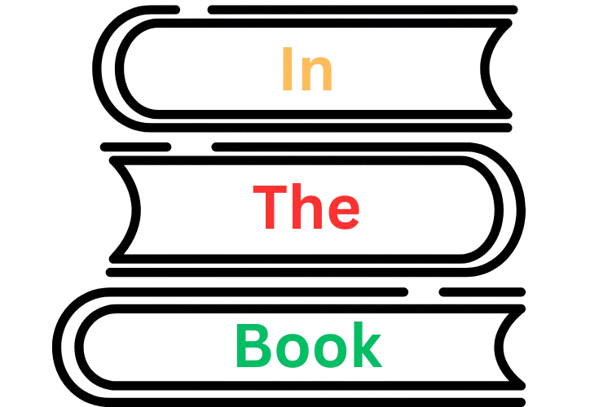Stephen King is one of the most prolific authors of our time. His books span decades and genres, readers with thrilling stories and unforgettable characters. If you are a fan or just getting started, it is helpful to know the order of his works to fully appreciate the evolution of his writing.
Here is a guide to Stephen King books in order, making it easier for you to dive into his literary world.
Contents
Stephen King books in order
Here is Stephen King books in order:
The Early Years
Stephen King started his writing career with horror, quickly establishing himself as a master of the genre. His early works are some of his most iconic and set the stage for his later success.
Carrie (1974): This debut novel tells the story of a bullied teenage girl with telekinetic powers. It explores themes of revenge and supernatural horror, making it a standout in King’s early career.
Salem’s Lot (1975): This book reimagines the vampire myth, set in a small town in Maine. It’s a chilling tale of evil taking over a seemingly ordinary place.
The Shining (1977): One of King’s most famous works, this novel follows the Torrance family as they become caretakers of the haunted Overlook Hotel. It’s a story of isolation, madness, and supernatural horror.
Rage (1977): Published under the pseudonym Richard Bachman, this book is a psychological thriller about a high school student who takes his class hostage.
The Stand (1978): This post-apocalyptic epic details a world decimated by a plague and the ensuing battle between good and evil. It’s a massive, intricate story that showcases King’s storytelling prowess.
The Long Walk (1979): Another Bachman book, this dystopian novel features a deadly walking contest where only the strongest survive.
The Dead Zone (1979): This novel explores the life of a man who wakes from a coma with psychic abilities. It’s a mix of thriller and supernatural elements.
The 1980s Boom
The 1980s were a prolific decade for King, with many of his books becoming bestsellers and later adapted into films and TV shows.
Firestarter (1980): This novel follows a young girl with pyrokinesis, hunted by a secret government agency. It’s a tale of survival and power.
Roadwork (1981): Under the Bachman name, this novel delves into the life of a man resisting change and modernization.
Cujo (1981): A story of a rabid dog terrorizing a small town, this book is a gripping tale of fear and survival.
The Running Man (1982): This dystopian novel, also published as Richard Bachman, depicts a deadly game show in a future America.
The Dark Tower: The Gunslinger (1982): The first book in the Dark Tower series introduces Roland, the last gunslinger, in his quest across a desolate world. This series blends fantasy, horror, and western genres.
Christine (1983): This novel tells the story of a possessed car and its deadly influence over its owner.
Pet Sematary (1983): A chilling tale of grief and resurrection, this book explores the consequences of bringing the dead back to life.
Cycle of the Werewolf (1983): This novella, paired with illustrations, tells the story of a werewolf terrorizing a small town.
The Talisman (1984): Co-written with Peter Straub, this novel follows a boy on a quest to save his dying mother by traveling through parallel worlds.
Thinner (1984): Published as Bachman, this novel follows a man cursed to lose weight uncontrollably.
It (1986): One of King’s most famous works, this novel tells the story of a group of friends confronting a shape-shifting monster that preys on children.
The Eyes of the Dragon (1987): This fantasy novel is a departure from King’s usual horror, telling a tale of magic and betrayal in a medieval kingdom.
The Dark Tower II: The Drawing of the Three (1987): Continuing Roland’s quest, this book introduces new companions and deepens the series’ mythos.
Misery (1987): A psychological horror novel about a writer held captive by his “number one fan,” this book is a tense and claustrophobic read.
The Tommyknockers (1987): This novel explores the impact of a buried alien spacecraft on a small town, blending science fiction with horror.
The Dark Half (1989): This novel follows a writer whose pseudonym takes on a life of its own, leading to a series of murders.
The 1990s and Beyond
King continued to write prolifically into the 1990s and 2000s, experimenting with different genres and storytelling techniques.
The Dark Tower III: The Waste Lands (1991): Roland’s journey continues, with new challenges and revelations in his quest for the Dark Tower.
Needful Things (1991): This novel tells the story of a sinister shopkeeper who sells items that fulfill desires but come with a terrible price.
Gerald’s Game (1992): A psychological thriller about a woman handcuffed to a bed in a remote cabin, facing both physical and psychological terrors.
Dolores Claiborne (1992): This novel explores the life of a woman accused of murder, revealing secrets and trauma.
Insomnia (1994): This novel follows an elderly man plagued by insomnia who begins to see auras and other supernatural phenomena.
Rose Madder (1995): This novel tells the story of a woman escaping an abusive marriage, finding strength and supernatural assistance in a mysterious painting.
The Green Mile (1996): Originally published as a serial novel, this story follows a death row supervisor and the miraculous events surrounding one of the inmates.
Desperation (1996): This novel explores the battle between good and evil in a remote Nevada town.
The Regulators (1996): Published as Richard Bachman, this novel is a parallel story to “Desperation,” set in a suburban neighborhood under siege.
Bag of Bones (1998): This novel follows a writer mourning his wife’s death who encounters supernatural occurrences at his summer home.
The Girl Who Loved Tom Gordon (1999): This novel tells the story of a young girl lost in the woods, surviving through her wits and imagining baseball player Tom Gordon as her protector.
The Dark Tower IV: Wizard and Glass (1997): This installment of the Dark Tower series delves into Roland’s past and his journey with his ka-tet.
Dreamcatcher (2001): This novel blends science fiction and horror, following four friends facing an alien invasion.
Black House (2001): Co-written with Peter Straub, this sequel to “The Talisman” continues the adventures of Jack Sawyer in a dark and dangerous world.
From a Buick 8 (2002): This novel tells the story of a car that serves as a portal to another dimension, blending mystery and supernatural elements.
The Dark Tower V: Wolves of the Calla (2003): Roland and his ka-tet face new challenges as they continue their quest for the Dark Tower.
The Dark Tower VI: Song of Susannah (2004): This book focuses on Susannah Dean’s journey and the group’s struggle to reunite.
The Dark Tower VII: The Dark Tower (2004): The final book in the series, this novel concludes Roland’s epic quest, tying together the threads of the entire series.
Cell (2006): This novel explores the aftermath of a pulse transmitted through cell phones, turning people into mindless killers.
Lisey’s Story (2006): This novel delves into the life of a widow uncovering dark secrets about her late husband’s past and his connection to a supernatural world.
Duma Key (2008): This novel follows a man recovering from a traumatic accident who discovers his artistic talents have supernatural powers.
Under the Dome (2009): This novel tells the story of a small town suddenly enclosed by an invisible dome, exploring themes of power, survival, and community.
11/22/63 (2011): This time-travel novel follows a man attempting to prevent the assassination of JFK, blending historical fiction with supernatural elements.
Doctor Sleep (2013): A sequel to “The Shining,” this novel follows a grown-up Danny Torrance as he battles new supernatural threats.
Mr. Mercedes (2014): This detective novel follows a retired cop hunting a mass murderer, marking the start of the Bill Hodges trilogy.
Finders Keepers (2015): The second book in the Bill Hodges trilogy, this novel follows a literary obsession that turns deadly.
End of Watch (2016): The conclusion of the Bill Hodges trilogy, this novel blends crime thriller with supernatural elements.
The Outsider (2018): This novel follows the investigation of a brutal murder that seems to have a supernatural twist.
The Institute (2019): This novel explores the lives of children with special abilities who are kidnapped and held in a sinister facility.
If It Bleeds (2020): This collection of novellas includes stories that delve into the supernatural and psychological horror.
Later (2021): This novel follows a boy with the ability to see and communicate with the dead, blending crime and supernatural elements.
Billy Summers (2021): This novel tells the story of a hitman with a moral code, blending crime fiction with character-driven drama.
Conclusion
Stephen King’s extensive bibliography spans decades and genres, showcasing his versatility and storytelling prowess. From early horror classics like “Carrie” and
Read More:
- The Real Reason Invoices Go Unpaid — And How Collection Automation Can Fix It
- Best Places to Buy Diamonds and Engagement Rings Online
- Building Focus and Strategy Through Interactive Digital Experiences
- How Students’ Reading Interests Influence Their Motivation and Performance in Writing Assignments
- The Damages Resulting from the Use of Suboxone

Chandler is an avid automobile enthusiast who is passionate about all things on wheels. From the latest car models to classic vintage rides, I love exploring the automotive world’s intricate details and engineering marvels. With years of experience in test-driving, reviewing, and analyzing cars, I provide readers with comprehensive insights and honest opinions.



























